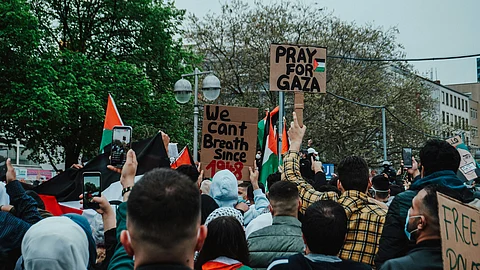

"Horrific images continue to emerge from Gaza of children dying before their families' eyes due to the continued lack of food, nutrition supplies, and the destruction of healthcare services," Adele Khodr, the UNICEF regional director for the Middle East and North Africa, said Tuesday in a statement.
Almost 3,000 of the 3,800 children receiving treatment for malnutrition have been cut off from their life-saving care because of the conflict, according to UNICEF. There is also a "looming risk of more vulnerable children falling sick to malnutrition," the agency said.
The delivery of humanitarian aid throughout Gaza has been challenging. There has been a slight improvement in food delivery in northern Gaza, but humanitarian aid delivery in southern Gaza "has declined dramatically," UNICEF said.
Only two of the three centers set up to treat seriously malnourished children are open. Plans for new centers have been stalled because of the military offensive.
"UNICEF has more nutrition supplies prepositioned to arrive in the Gaza Strip, if access allows," Khodr said. "We need better operating conditions on the ground, with more safety and less restrictions. But ultimately, it is a cease-fire that children need most."
According to international rights groups and U.S. officials, more than 1 million people have been displaced from Gaza's southern city of Rafah in the last month alone, and many of them have been uprooted multiple times. Ninety-five percent of the population there does not have access to clean drinking water. Most of Gaza's sanitation system has been destroyed, and fewer than a dozen of its 40 hospitals remain open.
The U.S. announced Tuesday that it is providing an additional $404 million in humanitarian aid to the region for Palestinian civilians and includes food, safe drinking water, health care, protection, education, shelter and psychosocial support.
The October 7 Hamas terror attack on Israel resulted in the deaths of about 1,200 people in Israel, mostly civilians, according to official Israeli figures. Hamas militants took about 250 hostages, 116 of whom remain in the Palestinian territory, including 41 the army says are dead.
Israel's military response has killed more than 37,000 Palestinians, according to the Gaza Health Ministry, which does not distinguish between fighters and civilians in its figures. (HN/VOA)
